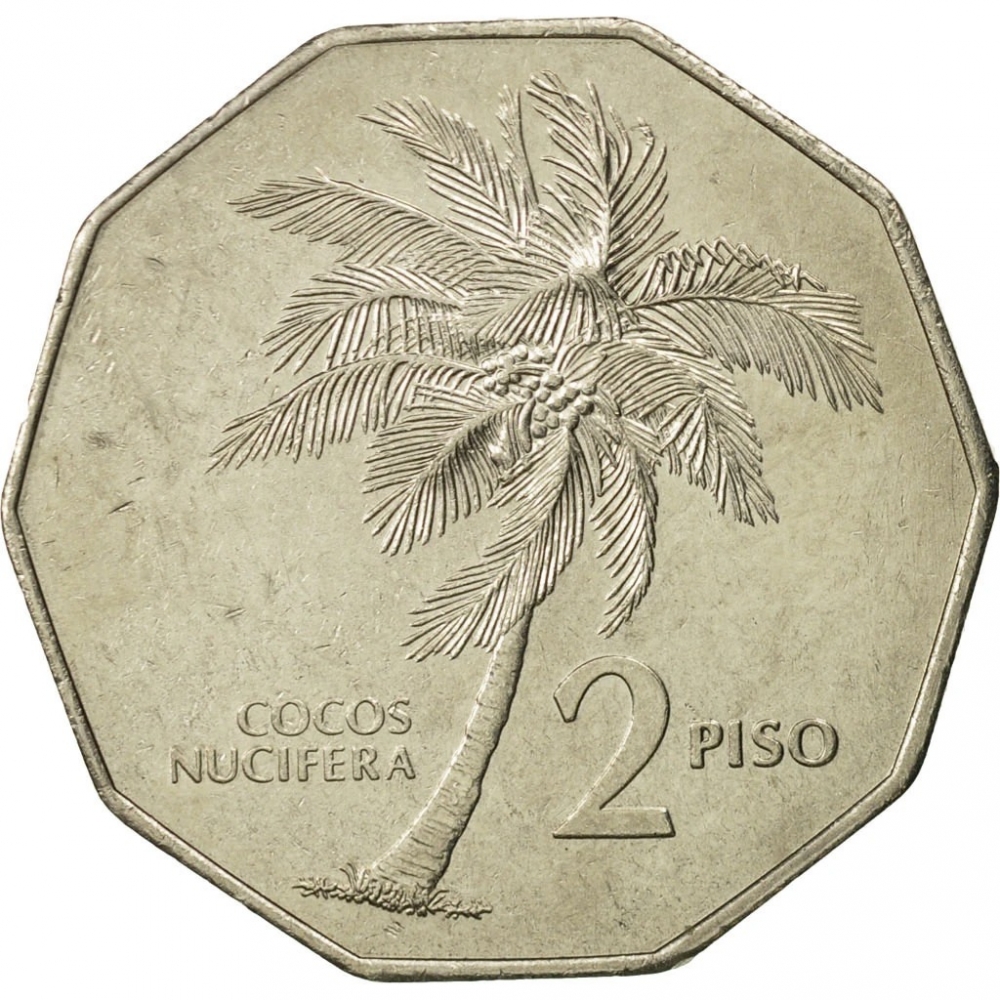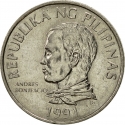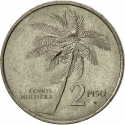You are about to finish your registration. Please check your mailbox (including spam folder). There should be a letter with a confirmation link. Check setting to make sure that your e-mail address is correct.
Send letter againDescription
The Flora and Fauna series was introduced in 1983 which included ₱2 coins. This series used the Optima typeface. ₱5 coins were reintroduced in 1991, and reduced-size 25-sentimo, 50-sentimo, ₱1 and ₱2 coins were distributed starting Dec 1992. Production of 50-sentimo and ₱2 coins ceased in 1995. The series was demonetized on Jan. 2, 1998.
Obverse

|
Head of Andrés Bonifacio left, name of country above, date below. Below truncation the mintmark of the Bangko Sentral ng Pilipinas. REPUBLIKA NG PILIPINAS |
|---|---|
Reverse

|
Coconut palm, value on the right. COCOS |
| Edge |
2 Piso
Flora and fauna series
KM# 244 Schön# 85
Characteristics
| Material | - |
| Weight | 12 g |
| Diameter | 31 mm |
| Thickness | 2 mm |
| Shape |
|
| Sides | 10 |
| Alignment | Medal |
| Mint |
Bangko Sentral ng Pilipinas (BSP)
|



